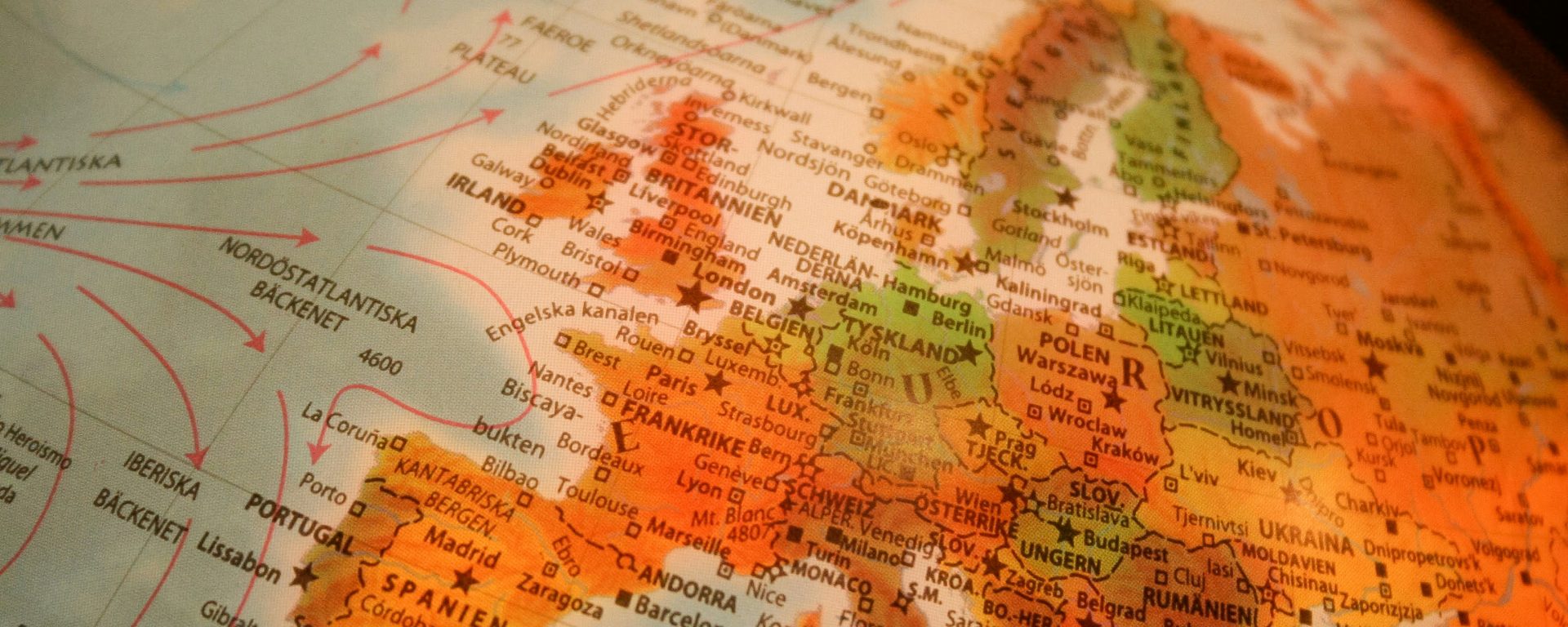How do we engage students in meaningful conversations about genocide — conversations that go beyond dates and definitions to cultivate empathy, critical thinking, and historical understanding? We, a genocide scholar and the son of Bosniak genocide survivors, came together to develop a flexible, open-access curriculum centered on the Bosnian War and Genocide.
Below, we share the inspiration behind our project, outline the core components of the toolkit, and express our hopes for how educators might utilize it to empower the next generation to confront injustice with knowledge and compassion.
Meet the team behind the curricula
Let us introduce ourselves.
I’m Dr. Sarah Snyder, a genocide scholar and lecturer in History and Humanities at Goodwin University. My colleague, Bekir Hodžić, is a rising senior at Vassar College and a former dual-enrolled student at Goodwin University. He is actively involved in anti-genocide advocacy focused on the Bosnian context.
In 2022, while I was serving as the director of a Holocaust center in Connecticut, I met Bekir, the son of Bosniak genocide survivors. We discussed the troubling lack of curriculum surrounding Bosnia and decided to collaborate on a project to address this gap. Together, we developed an open-access educational toolkit. That toolkit is now available in Goodwin’s LibGuide.
What we built
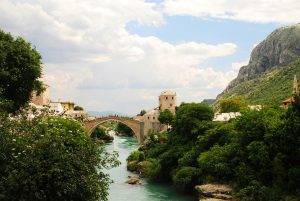
To start, we identified the key topics to focus on. We decided to develop four units: Bosnian history before the genocide, the Siege of Sarajevo, the Srebrenica Genocide, and Concentration Camps in Bosnia. Each unit includes a background packet, a presentation, and an activity — except for the Bosnian history lesson, which serves as a foundational overview.
To make the toolkit both impactful and practical, we focused on the following key instructional goals:
- Student engagement with primary sources: We emphasized hands-on projects that encouraged analytical thinking and allowed students to tell meaningful stories based on their learning.
- Thoughtful use of survivor testimonies: We carefully selected testimonies that were powerful yet appropriate for educational settings, ensuring they enhanced rather than overwhelmed the learning experience.
- Comparative analysis of genocide and mass atrocities: We built in opportunities for students to explore patterns across different historical events, deepening their understanding of genocide in a broader context.
- Flexible, modular lessons: Recognizing the constraints teachers often face, we designed each lesson to function independently or as part of a cohesive unit.
Four core approaches
Real voices, real impact — using primary sources in the classroom
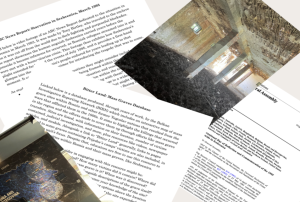
A key thread running throughout the toolkit is our emphasis on primary sources. Every lesson is built around original documents and materials from the Bosnian Genocide, and we’ve assembled source packets that include everything from live news reports to personal testimonies. Each source is accompanied by guiding questions and activity suggestions to help students connect with the human impact of these events — going beyond memorizing dates and facts.
One of the strengths of this approach is its flexibility. Teachers can use individual sources to complement broader lessons on genocide. For example, when discussing how communities respond to mass violence, an instructor might incorporate a source on memorialization in Bosnia to illustrate how survivors and communities commemorate these tragedies. This adaptability allows educators to choose what works best for their specific classroom needs.
From artifact to impact — hands-on history
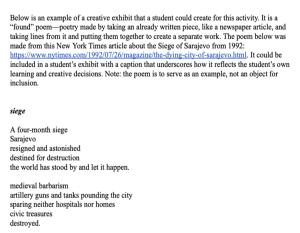
Another powerful component of the toolkit is our emphasis on hands-on, creative learning, most notably through a museum artifact activity centered on the Siege of Sarajevo. In this lesson, students curate their mini-exhibition by selecting artifacts related to the Siege.
What makes this project especially meaningful is the personal connection students can forge with the material. For instance, a student with a passion for dance might choose a pair of ballet slippers from Sarajevo’s War Childhood Museum and design their exhibit around that symbol of resilience.
Teachers can extend this idea by encouraging students to build full exhibits around specific themes, incorporating music, poetry, visual art, or any medium that helps them express what they’ve learned. This approach offers students a creative outlet to process difficult material and explore emotional responses within a structured, supportive environment.
These student-created exhibits can also be shared with classmates, families, or the broader community. This can be especially impactful for parents — some of whom may have been children themselves during the Bosnian Genocide — who might not be familiar with the details of that history.
The said and unsaid — learning from survivor testimonies
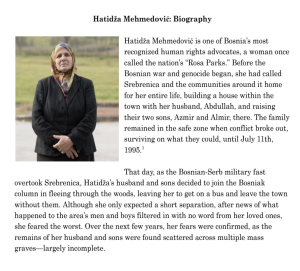
Survivor testimony plays a central role in our lesson on the Srebrenica Genocide. We carefully selected testimonies with three key considerations in mind: age appropriateness, accessible language, and realistic time constraints for classroom use.
In the main activity, students are given short biographies of Srebrenica survivors and asked to develop their own interview questions. They then engage with video clips and written testimonies, using those materials to see which of their questions can be answered and which remain unanswered.
We encourage teachers to guide students through this reflection process, focusing not just on what is said, but on what is left unsaid. These silences are powerful. They help students understand that genocide doesn’t only take lives — it erases stories, interrupts memories, and often leaves painful gaps in the historical record. Grappling with those absences is a vital part of honoring survivors and understanding the long-lasting impact of mass atrocity.
Making Connections Across History
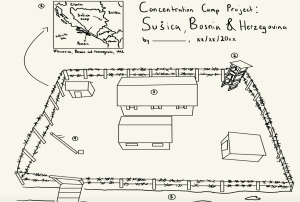
Our fourth central focus is comparative analysis, which we embedded in the lesson plan on concentration camps. Recognizing that most American classrooms prioritize Holocaust education, we intentionally designed this lesson to introduce the Bosnian Genocide within frameworks many educators already use.
In this activity, students engage in guided research by selecting from a curated list of concentration camps, including those from the Bosnian Genocide as well as other genocides and mass atrocities. After completing their research, they create visual maps that compare and contrast the structure, purpose, and conditions of the camps. This exercise helps students identify patterns across historical events while also highlighting the distinctiveness of each context.
This comparative approach not only deepens understanding but also supports teachers in meeting state requirements for Holocaust education. By including Holocaust-era camps in the analysis, educators can fulfill mandated standards while broadening students’ global perspective on genocide and systemic violence.
Our next steps
We’re excited to continue building out this curriculum with future units that explore the history, culture, and identity of Bosniaks — the ethnic group primarily targeted during the genocide. By incorporating this perspective, students can better understand the specific conditions that led to the atrocity while also developing a deep-seated empathy that extends beyond narratives of victimhood.
We’re also planning new lessons on contemporary issues such as international justice and ongoing genocide denial in Bosnia. These additions will help students see that genocide is not just a chapter in the past, but a continuing story with real-world implications today.
As we build on this work, we’re eager to hear from educators using the toolkit. We welcome feedback on what’s working, what could be improved, and what resources would make these lessons even more impactful.
Take a look at our curriculum! We hope it supports meaningful, lasting conversations in your classroom.
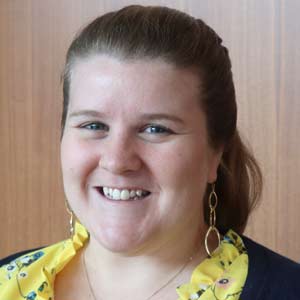
Dr. Sarah Snyder is a lecturer in the History, Humanities, and Spanish Department at Goodwin University in East Hartford, CT. She is also a visiting scholar with the Center for the Study of Genocide and Human Rights at Rutgers University, where she is taking part in a think-tank on the Stockholm Declaration. In addition to her current roles, she has been elected a member of the Advisory Board for the International Association of Genocide Scholars for two terms and sat on its international conference planning committee for both terms.
As a genocide scholar, her areas of interest include survivor justice, intergenerational trauma, testimony, and refugee communities. Her research highlights the misperceptions of survivorship as related to time via her upcoming book Trauma Beyond Time: Temporal Construct in Holocaust Testimonies. Additionally, she is co-editing a volume with Dr. Saghar Birjandian entitled Genocide Studies: Through the Eyes of Intergenerational Survivors. Their book will shine light onto what it means and entails politically, emotionally, and academically to study genocide while having familiar legacies of genocide.
Sarah holds a PhD in the History of Ideas with a concentration in Holocaust Studies from the University of Texas at Dallas. She completed her master’s from the University of Buffalo in Cultural Anthropology. During that time, she conducted original research in museology at Auschwitz-Birkenau where she received the award “If Not for Those Ten.”

